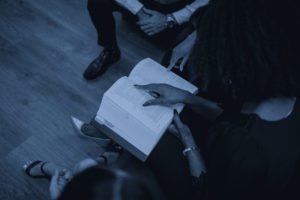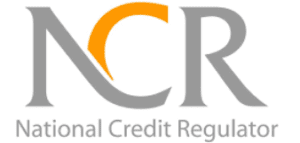What is an extension of a section?
Extending a section in sectional title schemes is described in the Sectional Titles Act 95 of 1986 (“the ST Act”) as “extending the boundaries or floor area of the section”. Enclosing a patio or balcony located on unregulated common property or an exclusive use area increases the floor area of the section. This has the effect of increasing the participation quota (“PQ”) of that section, and along with that there is an increased responsibility to pay toward the levy contributions. The owner’s PQ will also result in a higher voting value when votes are taken based on the PQ. If the correct proceedure is not followed, it can result in the construction being deemed as illegal extensions within the Community Scheme.
In terms of section 5(1)(h) of the STSM Act the body corporate must, on application by an owner and upon special resolution by the owners, approve the extension of boundaries or floor area of a section in terms of the ST Act.
Section 24 of the ST Act deals with the extension of sections, and requires various steps to be taken including:
- Requiring a land surveyor or architect concerned to submit a draft sectional plan of the extension accompanied by various documents and information to the Surveyor-General for approval.
- An application accompanied by various documents and information to the registrar for the registration of a sectional plan of extension of a section.
- The applicant must, if there is a deviation of more than 10% as a result of the extension, send a notice by registered post to each mortgagee giving important prescribed details.
- The registrar shall then register the sectional plan of extension of a section, and shall make an appropriate endorsement on the title and he shall furnish a copy of the sectional plan of extension to the local authority concerned and notify the Surveyor-General of the registration of the sectional plan of extension, and thereupon the Surveyor-General shall amend the original sectional plan and the deeds office copy of the sectional plan to reflect such extension of a section.
Why must the extensions be legally authorised?
The legislation clearly makes the body corporate responsible to ensure that the extensions are legalized. In terms of section 5(1)(h) of the STSM Act the body corporate must, on application by an owner and upon special resolution by the owners, approve the extension of boundaries or floor area of a section in terms of the ST Act. In terms of section 3(1)(p) of the STSM Act, one of the body corporate’s functions is to ensure compliance with any law relating to the common property or to any improvement of land comprised in the common property.
There are consequences that can arise due to the unauthorised extensions that could affect all the members of the body corporate. The simplest consequence is that the participation schedule needs to be adjusted such that the owners who have extended their section pay a greater share toward the contributions. Furthermore, the insurance premiums may need to be adjusted. The sectional plan also needs to be amended such that it correctly illustrates the actual buildings comprising the scheme.
What process should the body corporate follow to regularise the illegal extensions?
If the body corporate fails to obtain the participation of all the members in taking the necessary resolutions, it will be forced to make an application to the Community Schemes Ombudsman (the “CSOS”). In terms of section 38 of the Community Schemes Omud Service Act 9 of 2011 (the “CSOS Act”) it is possible that any person may make an application to the CSOS if such person is a party to or affected materially by a dispute. The body corporate can therefore make an application to the CSOS to declare a dispute against the owners of sections who have made illegal alterations to their sections. An application must be made in the prescribed manner and as may be required by practice directives; lodged with an ombud; and accompanied by the prescribed application fee.
In terms of section 6(9) of the STSM Act a body corporate that is unable to obtain a special or unanimous resolution may approach the chief ombud for relief. Therefore, the CSOS are empowered to provide the body corporate with the required special resolution to authorise the extensions (in terms of section 24 of the ST Act).
What can the body corporate do to collect the levies on the basis of the correct allocation before the section(s) is/are legally extended?
It is unfair that owners must subsidise the levies of other owners who have illegally extended their sections. The process for legalising the extensions is lengthy as discussed above. It may be necessary for the body corporate to come up with a plan to collect the levies on a more reasonable basis in the interim until the process for the legal extension is complete. There are two ways in which the body corporate can collect levies on the basis of actual floor size (because of illegal extensions) and not on the basis of the incorrect sectional plan recorded PQ values.
1. Changing the effect of the PQ
In the first place the body corporate can adopt a rule that changes the effect of the PQ.
In order to modify the PQ, a rule in terms of section 11(2) of the STSM Act, will be required to be prepared, and approved by a special resolution of the members of the body corporate, and further consented to, in writing, by any adversely affected owner. Once the required special resolution is obtained, the approved rule must be submitted to the CSOS for examination, in terms of section 10(5) of the STSM Act. If following examination of the rule, the chief ombud is satisfied that the amendment is reasonable and appropriate to the scheme, the amended rule will be approved. The amended and approved rule will then come into effect as from the date of the chief ombud’s certificate of approval.
Should the body corporate not be able to obtain the required resolutions in regard to approving and recording a new levy allocation rule, it can make an application to the CSOS to amend the exclusive use rules in terms of section 39(3)(b) of the CSOS Act, which states that:
“An application made in terms of section 38 must include one or more of the following orders: in respect of scheme governance issues – an order requiring the association to approve and record a new scheme governance provision.”
2. Having the levies adjusted at the CSOS
The body corporate can make an application to the Ombud to have the levy contributions adjusted in terms of section 39(1)(c) of the CSOS Act, which states that:
“An application made in terms of section 38 must include one or more of the following orders: in respect of financial issues – an order declaring that a contribution levied on owners or occupiers, or the way it is to be paid, is incorrectly determined or unreasonable, and an order for the adjustment of the contribution to a correct or reasonable amount or an order for its payment in a different way.”
This order will allow the body corporate to collect levies on the correct and reasonable basis until such time as the illegal extensions are regularised.
Increasing the insurance for the illegal extensions
The illegal extensions could also require the scheme’s insurance be increased to cover the additional common property (such as the additional roof, walls, windows, doors, sylights etc). In order to achieve this the body corporate can make an application to the Ombud to increase the amount of insurance in terms of section 39(1)(a) of the CSOS Act, which states that:
“An application made in terms of section 38 must include one or more of the following orders: in respect of financial issues – an order requiring the association to take out insurance or to increase the amount of insurance.”
Written by Dr. Carryn Melissa Durham of Stratafin













